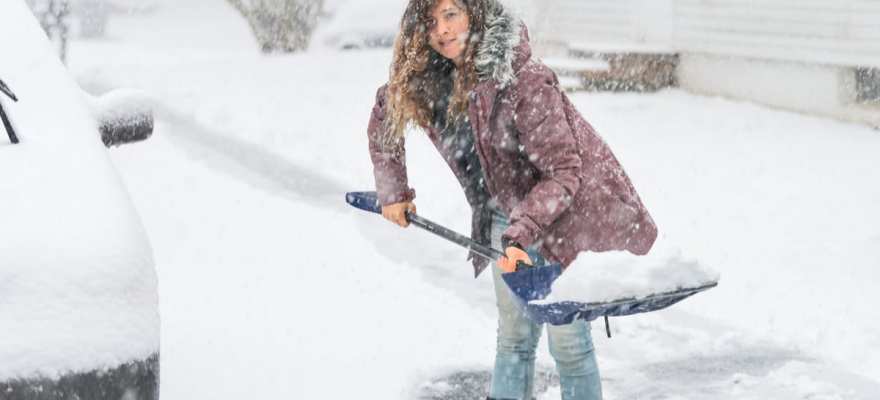
Snow shoveling is a strenuous exercise. Be sure to follow these tips to avoid injury.
There are many good things about a fresh coating of snow on the ground, especially for those who are avid outdoor enthusiasts. Fresh powder makes for ideal skiing conditions as well as opportunities for snowshoeing and snowboarding.
Fresh snow also means having to clean up driveways and sidewalks. Snow shoveling is something many people do not enjoy, and it can potentially be dangerous if not done properly.
The possibility of an accident or injury while shoveling snow is very real. The American Academy of Orthopaedic Surgeons states that the most common injuries associated with snow removal include sprains and strains, particularly in the back and shoulders. Individuals who use snowblowers are not immune to injury, either. The Consumer Product Safety Commission found that more than 6,000 people were injured using snowblowers in 2009. Injuries from snowblowers can include lacerations and finger amputations.
Serious health problems may result from snow shoveling and snowblowing, including heart failure from overexertion. Many people are simply not physically fit enough to move heavy quantities of snow. Those who are may not treat snow removal as they would a strenuous exercise, which would need a warm-up period so as not to strain muscles. Furthermore, improper body mechanics can put undue stress on the lower back and cause herniated discs or degeneration in the spine.
Read Next | Indoor & Outdoor Snow Day Ideas
To reduce the risk of injury when shoveling snow, consider the following tips.
- Consult first with a doctor to get a health assessment. If you are restricted from certain strenuous exercises, it stands to reason that you will be restricted from shoveling snow as well. Many people underestimate just how strenuous snow removal can be.
- Choose the right snow shovel or snowblower. Tools with a curved handle or an adjustable length handle will help you feel more comfortable and minimize slouching and arching of the back. Select a shovel or snowblower that is lightweight to reduce the amount of weight you have to move in addition to the weight of the snow.
- Dress appropriately for the weather by layering clothing. Layering enables you to remain warm, but then shed layers should you become overheated. Sweating and having damp clothing could put you at risk for hypothermia. Be sure to cover extremities to guard against frostbite.
- Warm up muscles by treating snow removal for what it is — a physical activity. Cold, tight muscles are more prone to injury, say experts. It is advisable to spend 10 to 15 minutes with moderate exercise to get the body ready for the workout ahead. Take a brisk walk and stretch your arms, legs and back. It is best to limber up to avoid injury.
- Begin shoveling slowly, lifting only small amounts of snow. Remember that it is not a race, and there are no prizes offered for getting the job done in record time.
- Keep your back straight while bending your knees to lift snow. Position your feet wide apart for the best distribution of weight.
- Carry the shovelfuls of snow to where you want them, rather than tossing snow to the side or over your shoulders, which can only injure your body. Try to keep your arms close to your body to reduce stress on the spine.
- If using a snowblower, always wear eye protection.
- Never reach into the blades of a snowblower to dislodge snow or another obstruction. Turn off the snowblower first and wait for a few seconds to let the blades recoil before attempting to clear the blades.
- Turn off the engine any time you are walking away from the snowblower.
- Keep tabs on the electrical cord so that you don’t trip or accidentally run over it.
- Do not allow children to operate the snowblower.
- If you are not feeling well, it is best to leave snow removal to someone else. Many lawn care services double as snow removal businesses once the seasons change. Check to see what plans your landscaper offers
Snow removal is a fact of life for many people each winter. Treat it as a strenuous exercise that requires proper technique to help minimize injuries.

Read Next | Find Great After School Programs in Staten Island

